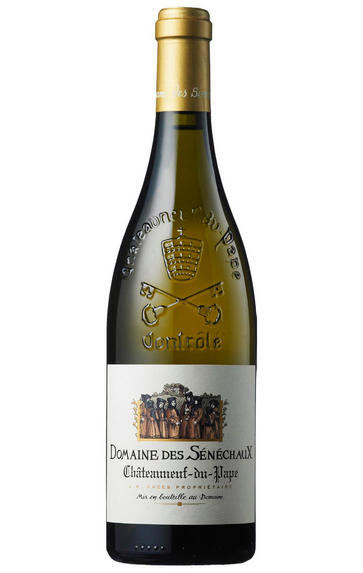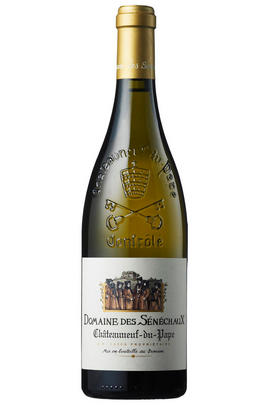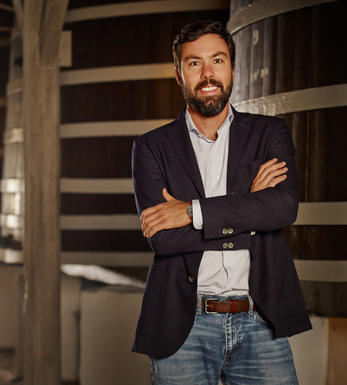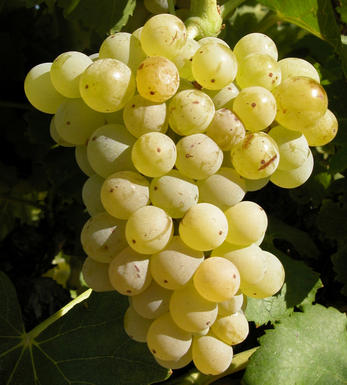
2016 Châteauneuf-du-Pape Blanc, Domaine des Sénéchaux, Rhône

Critics reviews
Joe Czerwinski - 31/10/2017
About this WINE

Domaine des Senechaux
Domaine des Sénéchaux is an excellent example of how a large concern – in this case the Cazes family of Château Lynch-Bages in Bordeaux – should manage its purchase by investing as and where necessary. They have done this without forsaking the historical essence of the domaine, personified by longstanding régisseur Bernard Tranchecoste. Domaine des Sénéchaux dates from the 14th century, making it one of the oldest wineries of the region. It spans 26 hectares across Châteauneuf-du-Pape, 23 of which are planted with red varieties, the remainder white. Their main holdings are on the south-westerly slopes of the Bois Sénéchaux, just to the east of the town of Châteauneuf-du-Pape. Here, some of their Grenache vines are as old as 90 years old. Production remains very traditional, and they retain a simple two-wine offering. Largely, grapes are de-stalked and new oak is avoided in favour of concrete, foudres and second-use Bordeaux (Lynch Bages) barrels.

Châteauneuf-du-Pape
The most celebrated village of the Southern Rhône, Châteauneuf-du-Pape is the birthplace of the now indispensable French Appellation d’Origine Contrôlée system – imperfect though it may be. Compared to the Northern Rhône, the vineyards here are relatively flat and often feature the iconic galet pebbles – the precise benefits of which are a source of much debate. Minimum alcohol levels required by the AOC are the highest in France, but at 12.5% it is well below the natural generosity of Grenache, which only achieves its full aromatic potential when it is fully ripe and laden with the resultant high sugars. Syrah and Mourvèdre contribute the other defining elements in the blend, adding pepper, savoury spice and structure to the decadent Grenache. There are a further 10 permitted red grape varieties which can be used to adjust the “seasoning”. Of the five white varieties permitted, it is Grenache Noir’s sibling – predictably perhaps – Grenache Blanc, which dominates, though Roussanne shows a great deal of promise when handled well, notably at Château de Beaucastel.

White Rhône Blend
With the exception of the wines from Condrieu and Château-Grillet virtually all Rhône Valley whites are made from blends.
In the north, the white wines of Hermitage, Crozes-Hermitage, St-Joseph, and St-Péray are produced from blends of Marsanne and Roussanne. Generally Marsanne is the dominant partner and it lends colour, body and weight to the blend, as well as richly scented fruit. Roussanne, a notoriously low yielder and pernickety to grow, produces intensely aromatic wines which contribute bouquet, delicacy and finesse to the blend.
Until about 15 years ago there was very little interest in southern Rhône whites as it was widely believed that the combination of dull non aromatic grapes and the baking summer heat meant quality wine production was nigh impossible. Since then the quality has improved markedly through the introduction of cool fermentation techniques and increased plantings of northern Rhône white grapes.
The base of many blends is still Grenache Blanc, a widely planted variety producing fresh wines with apple-like fruits, often with hints of aniseed. Ugni Blanc is still found in many blends, as is Clairette though their general lack of character and definition has led to a reduction in plantings. The future for southern Rhône whites appears to lie with Roussanne, Marsanne, and, increasingly, Viognier.


Buying options
Add to wishlist
Description
The blend this year continues to promote Roussanne,
now 35 pcenter and barrel-fermented. Nearly as
important is the modish Clairette (30 percent)
with Grenache Blanc (27 percent) and Bourboulenc
making up the balance. White flowers, orange zest
and crushed almonds are all evidenced here, with
a rich textural harmony which would make an
excellent pairing, over the next couple of years, with
scallops or turbot, amongst many other delights!
Drink now to 2023.
Simon Field MW, Wine Buyer
wine at a glance
Delivery and quality guarantee